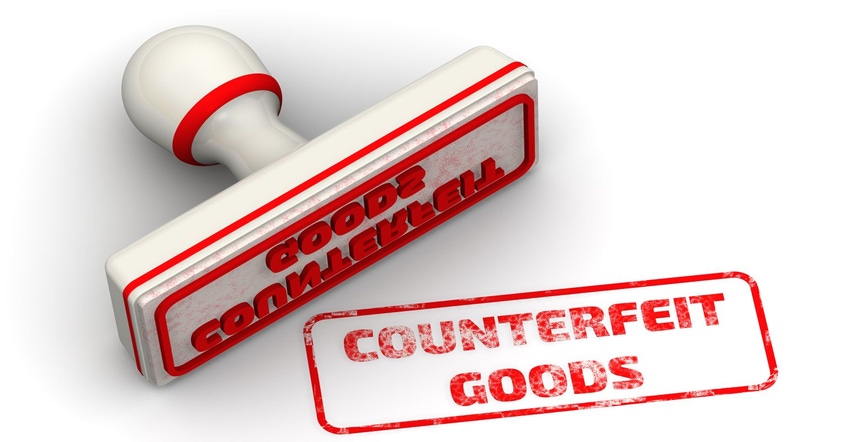Mission: Imposter — Tips for addressing counterfeit supplement products
Larisa Pavlick with the Consumer Healthcare Products Association offers tips to prevent and identify counterfeit dietary supplement products.

Congratulations, quality friends, your mission today—if you choose to accept it—is to evaluate this unknown powder (or liquid) mimicking your finished dosage form, sampled from a bottle that looks remarkably similar to your own, but labeled as “your” product. The clock is ticking, and it is time to put your analytical skills to work because the stakes are high.
After discovering counterfeit and imposter products, the questions from the quality team might begin with, “What is this, and what is the risk?” You are faced with identifying the unknown and doing it quickly. All the while, your marketing, legal and corporate teams are redirecting their time, attention and focus to crisis management, including protecting your brand reputation. This entire process is time-consuming and challenging, and it will take resources away from critical operations, but there is a greater risk in ignoring imposter products.
Counterfeit products are not a new problem. The history of counterfeiting was initially acknowledged during the Civil War with the introduction of imitation “greenbacks,” the first paper currency. In the U.S. Marshal Service’s Catching Counterfeiters series, they report, “By the 1860s, an estimated one-third of the currency in circulation was counterfeit.” Since 1985, imposter drug products have been a concern as well.
“Counterfeit, fake, adulterated or falsified drugs and pharmaceuticals, could be branded or generic drugs, excipients and active substances (in drugs and vaccines), medical supplies and devices, etc., intended to pass as the original. Counterfeits are always inferior in terms of quality, safety and efficacy compared to the original pharmaceuticals, and subsequently, they pose an unpredictable risk to public health and lead to loss of confidence in medicines, healthcare providers, and health systems.” – “Trends in Counterfeit Drugs and Pharmaceuticals Before and During Covid-19 Pandemic,” published on July 13, 2022, in Forensic Science International
This counterfeiting problem has garnered national attention as well. Last year, Congress passed the INFORM Consumers Act, which requires online marketplaces to collect and verify information from third-party sellers. Effective as of June 2023, the INFORM Consumers Act provides more transparency to online transactions and deters counterfeit, stolen or unsafe products being sold online. Also, the Buy Safe America Coalition—a diverse group of responsible retailers, consumer groups, manufacturers, intellectual property advocates and law enforcement officials—was established to support efforts at all levels of government to protect consumers and communities from the sale of counterfeit and stolen goods.
In recent dietary supplement industry news specifically, NOW Foods and Fungi Perfecti have talked about their investigations of counterfeit products and discovered many others are facing similar challenges. Imitation products are often discovered by the brand owner during post-market surveillance or after receiving a notification from a customer. Typically, these notifications are processed through the organization’s consumer complaint network. When an organization is notified of a difference in physical appearance or smell regarding the finished product or packaging, it may be a quality red flag leading to a potential counterfeit product.
Below are five tips to help manage your mission to address counterfeits:
Tip No. 1: Review and modernize your complaint handling procedures to watch for and appropriately investigate calls related to a change in appearance.
During an FDA inspection, the investigator is likely focused on complaints related to injury or illness; however, if you fail to investigate non-illness/injury complaints, you might miss the signals necessary to detect counterfeit products. Testing for unknowns can be costly and time-consuming, but evaluating potential hazards contained in counterfeit products is a good place to start. In recent examples of discovered counterfeit products, one contained primarily a low-cost excipient while another contained a pharmaceutical adulterant.
Tip No. 2: Quality assessments should consider known potential hazards reasonably likely to occur in that product category, which may cause illness or injury to the consumer.
The standard quality profile for a discovered counterfeit product may include allergens, microbial contamination, pesticides, heavy metals, or any known pharmaceutical adulterants. Red flag products associated with intentional adulteration may include joint health supplements adulterated with NSAIDs (Non-steroidal anti-inflammatory drugs), or weight loss products and others marketed for “performance enhancement” like sports supplements or erectile dysfunction products adulterated with pharmaceuticals. Regarding allergen adulteration, peanut skins have been found in spices and herbs utilized as a dietary supplement ingredient as well as other allergens found in the excipients of counterfeit dietary supplement products.
Remember to ask, “What is the source of the counterfeit product?” During one investigation, a company discovered the product was being received through a third-party logistics provider (3PL) from overseas; however, this company does not manufacture or distribute product from outside of the U.S., a red flag during the investigation.
Tip No. 3: Share an approved supplier list with your fulfillment center.
While post-market surveillance for dietary supplements is not required, it may be something to consider. Post-market surveillance for some brands may include purchasing your own products from the shelf, from online retailers, or via random sampling at the 3PL. All distribution channels should be evaluated. Consider conducting post-market surveillance at any point where the chain of custody may be compromised or where unknown third-party suppliers could potentially introduce your product without a quality control review. After purchasing your own products, it could be a valuable exercise to conduct a full quality review. This could also be conducted by an FDA investigator via an “undercover buy,” or—a worst-case scenario—it might be conducted by others for the next dietary supplement “test and tell” periodical.
Most brand owners are finding distinct differences in the labels or packaging of counterfeit products. Most imposters are missing child-resistant caps, or the cap color is different. More sophisticated counterfeits have minimal differences. One company recently reported the counterfeit was very well done with only minor changes to the label and the cap. The label color was slightly off (pantone difference) and lacked a glossy finish. The fake product even contained an actual lot number; however, the expiration date did not match the legitimate product.
Tip No. 4: Manage GMP product receiving and release, even at the 3PL provider or fulfillment warehouse, to verify the product meets specifications, including evaluation of the outer carton, bottle, cap and the actual label.
Current dietary supplement good manufacturing practices (cGMPs) are applicable to manufacturing, packaging, labeling and holding operations. Could part of the solution to counterfeit products be found within the existing cGMPs, if applicable sections were implemented and enforced at the logistics provider level? The regulatory expectations for an organization conducting holding and distribution operations are found in 21 CFR Part 111, Subpart M, and requirements include establishing written procedures; storage to protect the entire unit from contamination or deterioration; reserve samples; and more. Other provisions may also apply, including reviewing policies and procedures for receiving, supplier qualification programs, or complaint procedures; systems to verify third-party sellers or prevent sales by entities outside the approved list; and others.
Resources for establishing systems to potentially prevent counterfeit products from entering the market may also be found in the food GMP regulations (21 CFR Part 117, Subpart B), and other applicable Food Safety Modernization Act rules may also apply, including Foreign Supplier Verification Programs and Food Defense.
Tip No. 5: If you discover a counterfeit product with an identified health risk/hazard, notify FDA’s Office of Dietary Supplement Programs or your local FDA office.
Other potential resources at the FDA may include contacting the Consumer Complaint Coordinator in your area, FDA Import Operations, or the FDA Office of Criminal Investigations.
A perfect storm may have developed, thanks to a shift from in-store to online purchasing behaviors, in combination with successful sales for a popular product, the limited regulatory oversight at fulfillment warehouses, and limited GMPs for holding and distribution. These circumstances may also provide unethical manufacturers and third-party distributors the incentive and motivation to sell counterfeit products. Without the proper safeguards, and basic cGMP enforcement, the counterfeiting dilemma could continue or get worse.
We can learn from drug monitoring, too. In recent years, FDA has established monitoring for counterfeit drug products. In 2022, a study (“Criminal Action Against Drug Counterfeiters: Assessment of the FDA Office of Criminal Investigations Database 2016 Through 2021”) identified “130 unique enforcement actions against counterfeiting organizations and individuals. Overall, 64.6% of enforcement actions involved counterfeit products sold over the internet.” The conclusion reads in part: “This is the first report assessing enforcement actions against drug counterfeiters from the FDA Office of Criminal Investigation. The FDA is actively involved in identifying and prosecuting counterfeit drug rings, but the number of enforcement actions is smaller than the size of the problem.”
In conclusion, this “Mission Imposter” is not “Impossible.” Responsible industry, with the help from regulators for cGMP inspections and enforcement, and collaboration with fulfillment centers, can reduce or eliminate counterfeit products from reaching the market. Applying available cGMP barriers may help protect public safety and brand reputation. This is a triple-win for brand owners, regulators and distributors.
Editor’s note: Join hundreds of industry colleagues and FDA regulators at the 2023 CHPA Regulatory, Scientific & Quality (RSQ) Conference (www.chpa.org/RSQ) in September to hear more about protecting supply chain and product integrity, facing the counterfeit dilemma, plus many more informative topics and sessions.
Larisa Pavlick is the senior director of product quality and technical affairs at the Consumer Healthcare Products Association (CHPA), where she serves as the leader on quality, technical and manufacturing issues and leads the Product Quality & Manufacturing Controls Committee. Larisa has more than 25 years of industry experience specializing in product development, quality, regulation and operations, including 12 years in the dietary supplement industry and nearly eight years at U.S. Food and Drug Administration (FDA).
About the Author(s)
You May Also Like






.png?width=800&auto=webp&quality=80&disable=upscale)